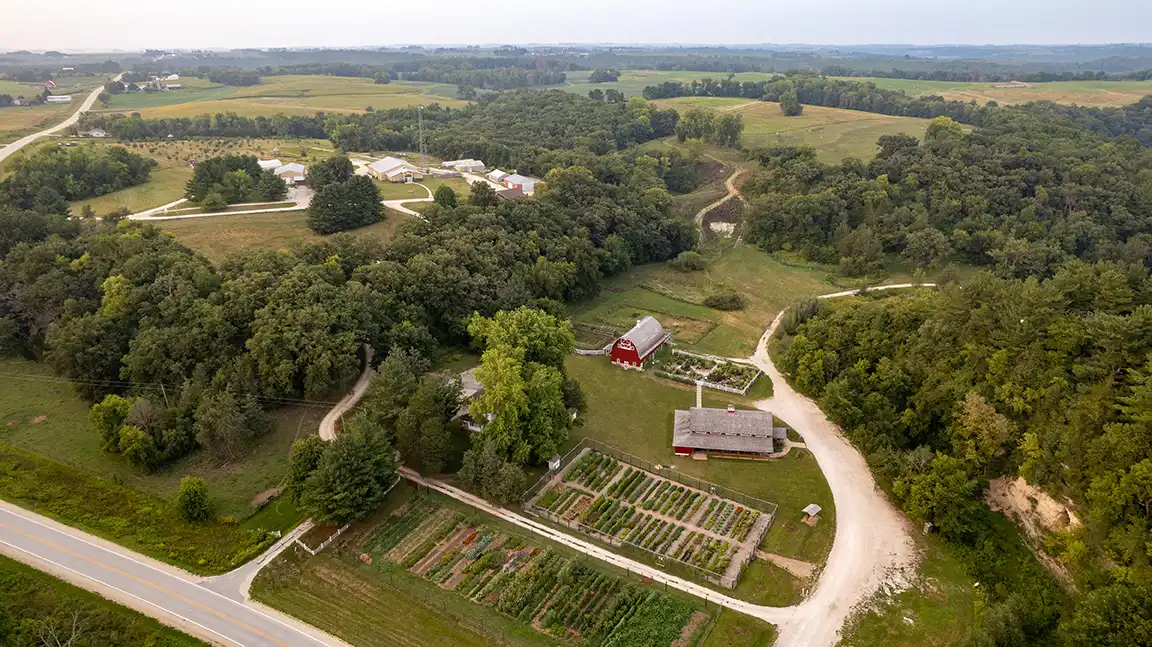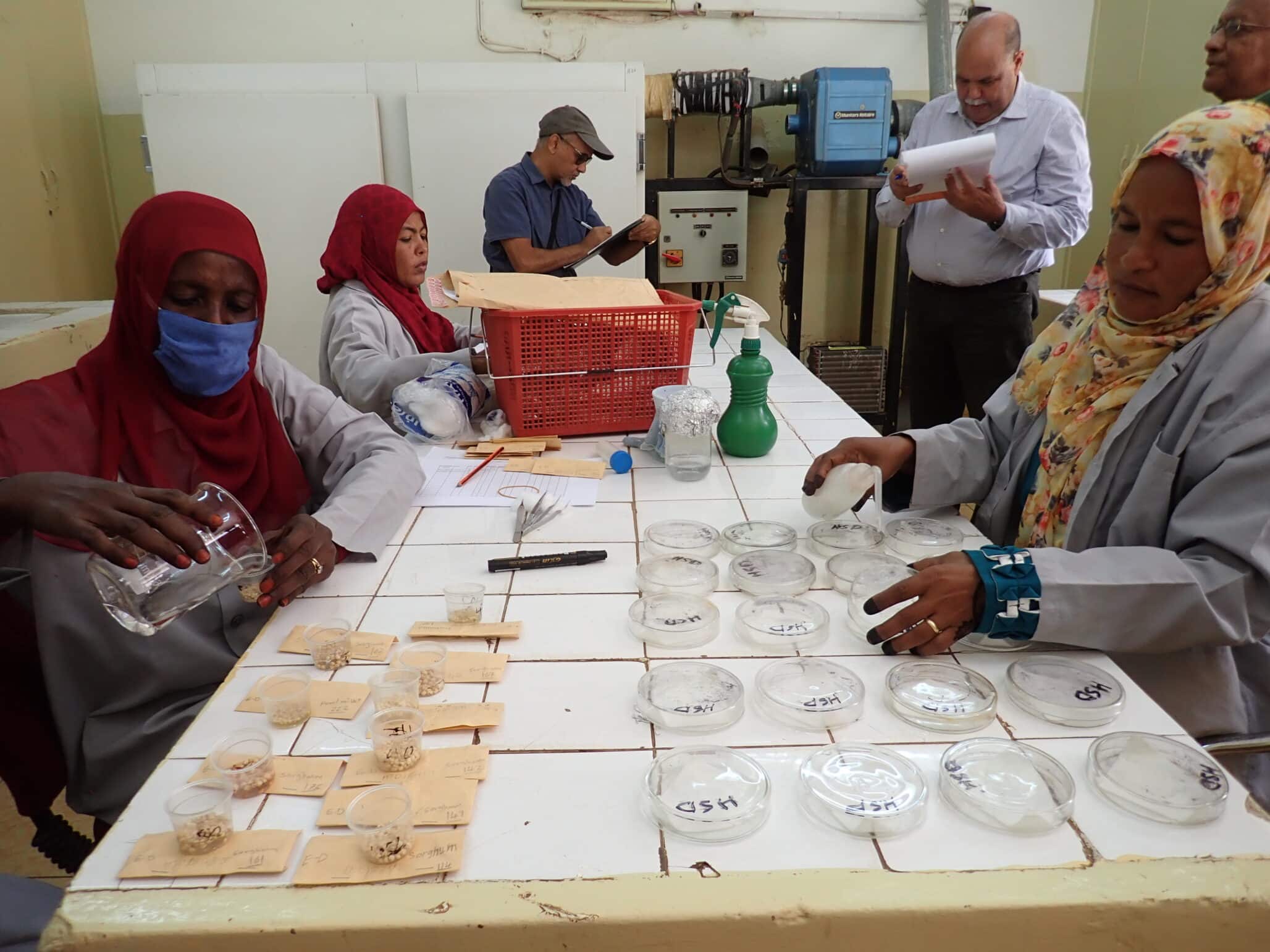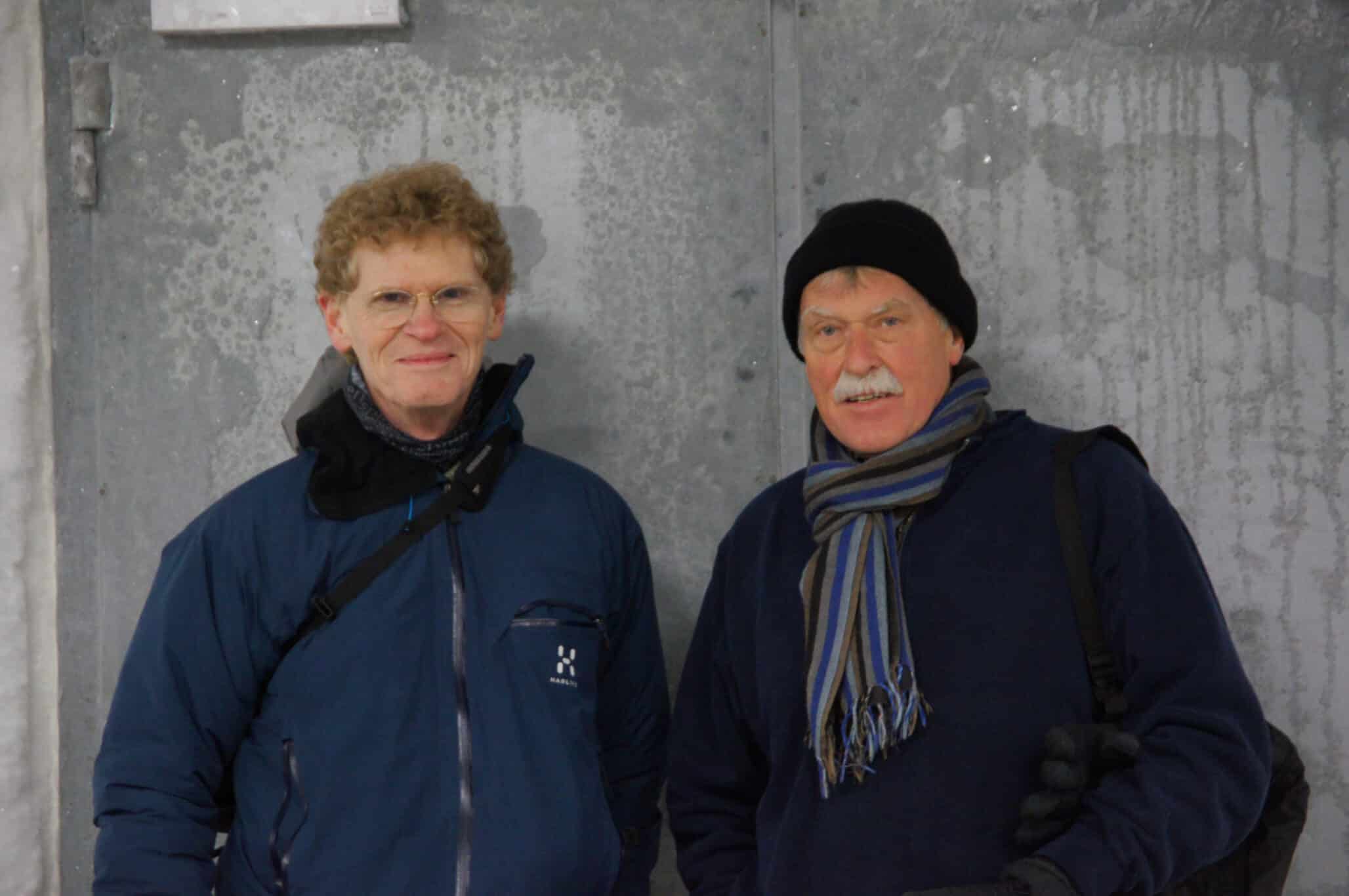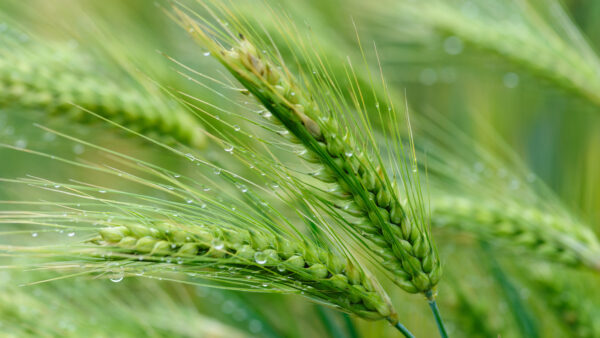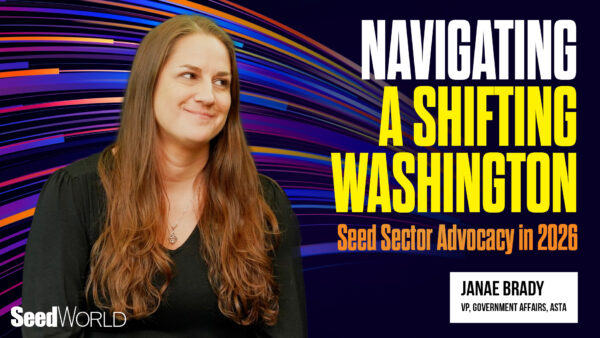How genetics are best preserved in an era of concentration.
Preservation of genetic diversity has long been on the agenda of the European seed sector, as it has been for the sector on a global scale, and both larger and smaller players continue to make it a priority.
As seed sector consolidation continues and smaller seed firms struggle to survive, the urgency of preserving genetics “cannot be overstated,” says Dr. Stefan Schmitz, executive director at Crop Trust, which conducts many initiatives to protect global seed diversity.
“We need crop diversity to build climate-resilient and sustainable food systems,” says Schmitz. “Without secure and accessible seed collections, we risk losing the ability to adapt our agricultural systems to changing conditions and meet the needs of a growing global population.”
Diverse genetics in crops and native species may also offer a wide range of nutritional profiles and phytochemicals that could potentially be critical to human health.
One reason for the perceived loss in crop genetic diversity over time obviously stems from population growth and the parallel mechanization of farming, which prioritized a smaller number of high-yield staples like wheat, maize and rice. Seed sector consolidation has also played a role, but at the same time, it can result in genetics being preserved instead of lost. That is, acquisition of small, struggling seed firms by larger ones generally means the smaller company’s genetic legacy is saved — and if most or all employees keep their jobs, their knowledge and expertise is also saved.

Still, by mid-2023, a relatively small number of seed companies were selling the majority of U.S. corn and soybean seed, according to the U.S. Department of Agriculture Economic Research Service (ERS). How much more consolidation will occur is difficult to predict, but Dr. Phil Howard at Michigan State University points out that it’s slowing at present for the simple reason that most potential targets have already been acquired.
He adds that “recent changes in U.S. merger guidelines may also create some barriers to further acquisitions in this market. However, independent corn, soybean and other seed companies may find it increasingly difficult to compete with the larger ones and exit the sector. In addition, state support may provide ChemChina/Sinochem/Syngenta or LongPing High-Tech with the resources they require to make further acquisitions outside of China.”
Regarding Europe, Dr. Ola Westengen at the Norwegian University of Life Sciences points to the major current overhaul of EU seed laws happening now, with the new ‘proposal for regulation of the production and marketing of plant reproductive material.’ This proposed legislation, he notes, has as one of its explicit goals the conservation and sustainable use of plant genetic resources. Discussion of this is currently very active in various EU bodies and in the public domain.
“I see this as a positive move towards a more holistic and integrated approach to genetic resources and seed governance,” says Westengen. “It will be exciting to see how this lands.”
On a global scale, he points to a “solid international governance framework” for genetic conservation, use and benefit sharing: The Plant Treaty.
“It’s great to see more and more countries joining this treaty,” Westengen asserts. “I think it helps national genebanks secure funding for their operation and management, and for making the diversity they conserve available to users — not only in their own country but among all treaty members.”
For its part, the Crop Trust is now mainstreaming its Global Crop Conservation Strategies into Plant Treaty processes. This includes identifying key entry points for the strategies in the main areas of the Treaty, disseminating information about the strategies, and identifying key collections relevant to the strategies that have yet to be fully recognized in the Treaty.
With all this happening, however, it’s also important to compare the statistics of the total number of commercial varieties on the market, with varieties that are protected by plant breeders’ rights. It shows that in many crops, 80% to 90% of the varieties are not protected by plant breeders’ rights especially in vegetables. Also, the global percentage of crop varieties that fall under a patent is extremely low ranging from less than 1% for most fruit crops and wheat and barley, and a bit higher for corn (4,1%). In vegetables it largely depends on the crops, where this share is between 1% and 5% for tomatoes, onions, green peppers, cucumbers and carrots, whereas for pumpkins and cabbages the share was between 5% and 10%. For large-acreage non-cereal crops, shares were below 1% for potatoes, and between 1% and 5% for rapeseed and sunflower. This means today’s farmers still retain wide and freely available seed choices, even though patented varieties are often chosen because they’re likeliest to provide farmers with the best profit.
Efforts to Preserve Seed Diversity
Many government-supported global and national seed bank initiatives are going strong, among them the famous Svalbard Global Seed Vault operated by Crop Trust. These seed banks provide a safety net against catastrophic crop failures and most also offer resources for breeding programs. Crop Trust’s 10-year BOLD project is currently building on the Crop Wild Relatives Project to continue the conservation and use of wild varieties. Crop Trust and its partners are also updating existing global conservation strategies for potato, yams, vigna, millets and sorghum, and developing new strategies for many others, including brassica, citrus, sunflower and vanilla.

“We’ve also established the ‘Power of Diversity Funding Facility,’ a multi-donor fund that aims to sustain and expand the use of ‘opportunity’ (neglected) crops across the global south,” says Schmitz. “These efforts align with the broader goals of the global Vision for Adapted Crops and Soils (VACS) Initiative. VACS empowers farmers to diversify their fields with climate-resilient and nutritious alternatives to mainstream crops.
“They directly address the challenges of climate change, food and nutrition security and biodiversity loss. Genebanks play a vital role in this process, working closely with local farmers, seed producers and community seed banks to strengthen seed systems and ensure traditional knowledge is integrated into breeding programs.”
In the U.S., those within the USDA’s National Plant Germplasm System have long worked to ensure researchers and breeders have access to genetic diversity. The System currently holds about 620,000 unique seed samples from more than 100 different crops. And in 2023, the USDA introduced a multi-year plan to strengthen national genebank germplasm management.
Dr. Sally Norton, research leader at the Australian Grains Genebank, believes genebank collections will become even more useful for breeders with increased use of genomic and digital technologies. In 2023, her genebank launched an online seed catalogue using the GRIN-Global Database System.
Schmitz also envisions genebanks undergoing much more digital transformation and their management improved through digitally enabled approaches.
“Today, over 7.4 million seed samples from hundreds of crop and forage species are conserved across more than 1,750 genebank collections worldwide,” he explains. “This number is growing, as is our knowledge of the genetic diversity within these collections, but to fully realize their potential, we need an efficient and effective global system of ex situconservation. In simple terms, we need good and reliable genebanks for our seeds, which involves strengthening information systems, harmonizing quality standards, managing knowledge more effectively, reducing unnecessary duplication and fostering better collaboration among genebanks.”
To achieve all of this, Crop Trust has established the Global Genebank Partnership and invites all genebanks to join.
“Data and information systems are central to this effort,” says Schmitz. “For instance, we’ve developed tools like the GRIN-Global Community Edition for individual genebanks to manage their collections and Genesys, a global platform where users can explore crop diversity, access data and request seeds. To ensure crop diversity is conserved and used in perpetuity, we aim to reach USD $850 million in the Crop Trust’s Endowment Fund. This would generate annual returns [that will] secure the essential operations of key international genebanks.”
Small but Mighty
And while the remaining pool of small independent seed companies, cooperatives and non-profits may be fewer nowadays, they continue to be vibrant. Many of them focus on region-specific varieties which may have cultural or historical significance.
For example, Let’s Liberate Diversity in Belgium has 22 seed bank members and a network of 170 national organizations operating across 21 European countries. In collaboration with approximately 15,000 farmers, it coordinates the management of about 40,000 plant varieties.

Board member Riccardo Bocci (representing Italy-based Rete Semi Rurali) reports that interest is growing among farmers and the public, with many initiatives having moved from just conservation to decentralized plant breeding.
“This change was achieved through dedicated training activities and participating in EU-funded research projects,” Bocci says.
“Our objective is not only to preserve old varieties but to promote more diversified, sustainable and resilient food systems better suited to face climate challenges.”
He adds that they are fighting to get recognition of these activities and Community Seed Banks within the Plant Genetic Resources for Food and Agriculture (PGRFA) System, both at national and European level.
“Only in some countries there are national committees dedicated to PGRFA, where we are invited to participate,” Bocci explains. “Some of our members have developed specific agreements with national or local gene banks to have access to PGRFA and facilitate their multiplication. Thanks to our work, we’ve demonstrated that Community Seed Banks in Europe are able to maintain and manage thousands of varieties, landraces and populations within broad networks of different actors.”
In Africa, the Seed Savers Network works with an organization called Global Bean to help over 58,000 smallholders access seeds through managing over 106 seed banks across villages in Kenya.
“Additionally, we run an incubation program with a biannual Seed School training that brings together practitioners both nationally and internationally,” says spokesperson Mercy Ambani. “To enhance our impact, we recognize the need to promote the utilization of genetic resources beyond just conservation. One key area is value addition for neglected and under-utilized crops, particularly legumes as they offer nutritional, environmental, and economic benefits.”
On the policy and advocacy front, Seed Savers Network actively engages with government stakeholders from the grassroots to international levels.
“Our focus is on advocating for seed banking as a formalized and government-supported step toward agro-biodiversity conservation,” says Ambani. “We are also participating in Access and Benefit-Sharing regulations, working to ensure farmers’ rights are recognized and protected. These ongoing discussions with policymakers have led to a greater appreciation of the agro-ecology movement, particularly within Kenya.”
Local Communication
This strengthening of connections between gene banks and local seed systems is something Westengen views as critical.
“We see that many genebanks already collaborate with local organizations like seed producer groups and community seed banks,” he says, “and such links are important for genebanks to make a difference in the seed systems farmers rely on.”
He also reminds us that preservation of genetics aligns with our human nature – that the majority of us really enjoy having access to a variety of produce and grains. “Most people prefer seeing a diverse fruit stall over one with only a few options,” he stresses.



